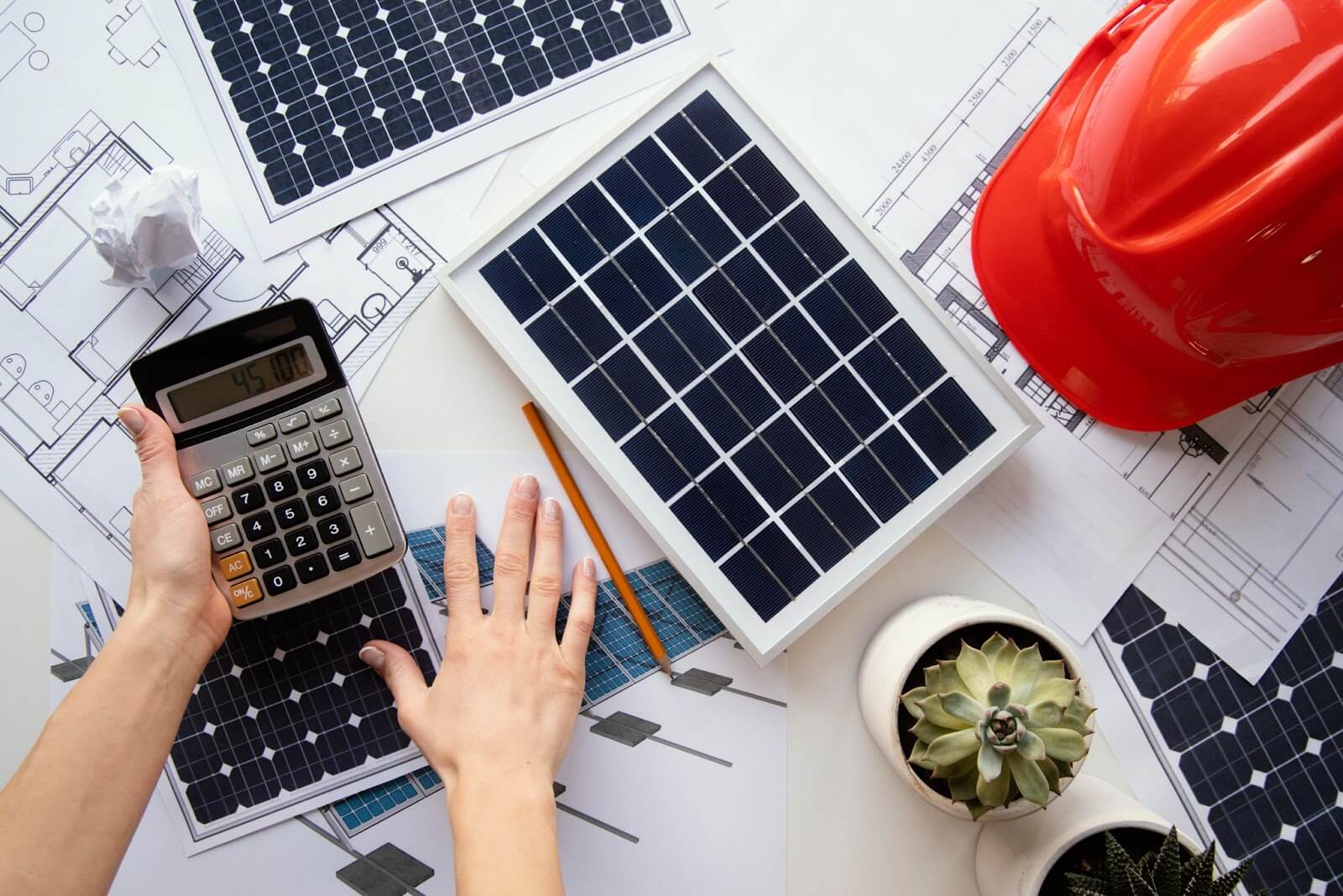
Will Solar Panels Raise or Lower Your Home Value in 2025?
As solar energy powers over 7% of U.S. homes in 2025, homeowners are increasingly curious about whether residential solar panels will raise or lower their property’s value. With the 30% Federal Solar Tax Credit set to expire for residential installations on December 31, 2025, and solar panel costs at historic lows, installing solar is a compelling investment. But how does it impact your home’s resale value? Studies show solar panels can boost home value by 4–6.8%, but certain factors can reduce or negate these gains.
This guide explores how solar panels affect home value, the financial and environmental benefits of solar energy systems, and key considerations to maximize your investment. For personalized quotes from trusted installers, visit EnergySage.
Do Solar Panels Increase Home Value?
Multiple studies confirm that solar panels generally increase home value, especially in markets with high electricity rates or strong demand for renewable energy solutions. Here’s the evidence:
- National Studies: A 2021 Zillow study found homes with solar panels sell for 4.1% more on average, adding $15,000–$20,000 to a $400,000 home. A 2019 Lawrence Berkeley National Laboratory (LBNL) study reported a 4.4% premium, with buyers paying ~$4 per watt of installed solar capacity (e.g., $28,800 for a 7.2 kW system).
- State-Specific Gains: In high-rate states like California ($0.33/kWh) or New Jersey ($0.16/kWh), solar homes fetch 5.5–6.8% premiums due to significant solar energy savings ($1,500–$3,500/year). In low-rate states like Idaho ($0.11/kWh), premiums are smaller (~2–3%).
- Buyer Appeal: A 2023 National Association of Realtors survey noted 67% of buyers value energy-efficient features, with solar panels ranking high for reducing utility bills and carbon footprints.
The Federal Solar Tax Credit (30% of installation costs, e.g., $6,600 on a $22,000 system) further enhances returns by lowering upfront costs, making solar a smart investment before the credit expires on December 31, 2025.
When Might Solar Panels Lower Home Value?
While solar panels typically boost home value, certain scenarios can reduce or negate this benefit:
- Leased Systems or PPAs:
- Issue: With solar leases or power purchase agreements (PPAs), you don’t own the panels, and buyers must assume the contract (10–25 years, $50–$150/month). A 2023 Redfin report found 40% of buyers hesitate to purchase homes with leased solar due to transfer complexities.
- Impact: May lower offers by $5,000–$10,000 or deter buyers, especially if payments exceed energy savings.
- Solution: Buy out the lease before selling (cost: $5,000–$15,000) or purchase panels outright to claim tax credits and avoid transfer issues.
- Poor Installation or Aesthetics:
- Issue: Poorly installed panels (e.g., misaligned, outdated designs) or roof damage can reduce curb appeal. A 2025 X post highlighted buyer concerns about “ugly” solar arrays on older roofs.
- Impact: May lower home value by 1–2% ($4,000–$8,000 on a $400,000 home) if repairs are needed.
- Solution: Hire NABCEP-certified installers (e.g., via Sunrun) and maintain panels (cleaning every 6–12 months, $150–$300).
- Low Electricity Rates:
- Issue: In states like Idaho or Louisiana ($0.11–$0.12/kWh), solar energy savings are lower ($800–$1,200/year), reducing buyer interest and premiums (~2% vs. 6% in California).
- Impact: Smaller savings may not justify installation costs, limiting value increase.
- Solution: Highlight environmental benefits and federal/state incentives to attract eco-conscious buyers.
- Aging Systems:
- Issue: Panels degrade 0.5–1% annually, with warranties guaranteeing 80–90% output after 25 years. Older systems (15+ years) offer less savings, reducing appeal.
- Impact: May lower premiums to 1–2% if panels need replacement soon.
- Solution: Choose high-efficiency monocrystalline panels (e.g., Qcells, 19–22% efficiency) with 25-year warranties.
Factors That Maximize Solar’s Impact on Home Value
To ensure solar panels boost your home value, consider these factors:
- System Ownership: Owning your system (via cash or loan) allows you to claim the Federal Solar Tax Credit (30%, e.g., $6,600 on $22,000) and avoids lease/PPA transfer issues. Buyers prefer owned systems, per a 2024 EnergySage survey, increasing premiums by 1–2%.
- High Electricity Rates: In states like California, New York, or Hawaii ($0.24–$0.33/kWh), solar saves $1,500–$3,500/year, making homes more attractive and boosting value by 5–6.8%.
- Quality Installation: Professional installation by certified providers (e.g., Sunrun, Palmetto Solar) ensures efficiency and aesthetics, enhancing appeal. Poor installations can cost $1,000–$5,000 to fix, per SEIA data.
- Battery Storage: Adding a 10 kWh battery ($7,000–$18,000, eligible for tax credit) increases savings under time-of-use rates and appeals to buyers seeking outage protection, adding 0.5–1% to value.
- State Incentives: Programs like New York’s 25% tax credit (up to $5,000) or California’s SGIP battery rebates ($150/kWh) lower costs, making solar more attractive. Check DSIRE for local incentives.
- Market Demand: Solar premiums are higher in eco-conscious markets (e.g., California, Colorado) where buyers prioritize renewable energy benefits.
Financial and Environmental Benefits of Solar Panels
Beyond home value, solar energy systems offer significant benefits:
- Energy Savings: A 7.2 kW system saves $1,000–$3,500/year, depending on state rates, with lifetime savings of $31,000–$100,000 over 25 years, per EnergySage.
- Federal Solar Tax Credit: Reduces costs by 30% (e.g., $6,600 on a $22,000 system) for installations by December 31, 2025. File IRS Form 5695 to claim it.
- Payback Period: 4–10 years, faster in high-rate states (CA, NY) than low-rate states (ID, AL).
- Environmental Impact: Cuts ~8,000 lbs of CO2 annually, equivalent to planting 120 trees, appealing to eco-conscious buyers.
- Energy Independence: Protects against rising electricity rates (2–4% annually) and outages with battery storage.
How to Maximize Solar’s Value Before Selling
To ensure solar panels increase your home’s value, follow these steps:
- Own Your System: Purchase panels outright ($18,144–$26,424 for 7.2 kW) or use a loan to claim the Federal Solar Tax Credit and avoid lease/PPA complications.
- Choose Reputable Installers: Work with NABCEP-certified providers like Sunrun to ensure quality and aesthetics. Compare quotes on EnergySage to save 10–20%.
- Maintain Panels: Regular cleaning ($150–$300/year) and inspections ensure 80–90% performance, boosting buyer confidence.
- Highlight Savings: Provide buyers with utility bill savings data (e.g., $1,500/year in California) and warranty details (25-year performance guarantees).
- Leverage Incentives: Combine the federal tax credit with state programs (e.g., New York’s 25% credit) to lower costs, making your home more appealing. Check DSIRE for options.
- Market to Eco-Conscious Buyers: Emphasize renewable energy benefits in listings, as 67% of buyers prioritize energy efficiency, per 2023 NAR data.
FAQs About Solar Panels and Home Value in 2025
How much do solar panels increase home value?
Solar panels add 4–6.8% to home value, or $15,000–$27,200 for a $400,000 home, with ~$4/W of installed capacity (e.g., $28,800 for a 7.2 kW system).
Do leased solar panels lower home value?
Leased systems or PPAs can reduce offers by $5,000–$10,000 due to transfer complexities, per Redfin. Buying out the lease ($5,000–$15,000) or owning panels outright avoids this.
Is the Federal Solar Tax Credit available in 2025?
Yes, the 30% tax credit applies to systems installed by December 31, 2025, saving $5,443–$7,927 on a $18,144–$26,424 system. It’s nonrefundable but rolls over to future years.
Are solar panels worth it if I’m selling soon?
If selling within 3–5 years, solar may not recoup costs (payback: 4–10 years) unless in high-rate states (CA, NY). Owned systems still add 4–6% to value, enhancing appeal.
How long do solar panels last?
Solar panels last 25–30 years, with warranties guaranteeing 80–90% output after 25 years. Regular maintenance ($150–$300/year) ensures performance and buyer confidence.
Conclusion: Solar Panels Boost Home Value in 2025
In 2025, residential solar panels typically increase home value by 4–6.8% ($15,000–$27,200 for a $400,000 home), driven by solar energy savings ($1,000–$3,500/year) and buyer demand for renewable energy benefits. However, leased systems, poor installations, or low-rate states can reduce premiums. To maximize value, own your system, claim the Federal Solar Tax Credit (expiring December 31, 2025), and work with trusted installers like Sunrun.
Start by comparing quotes on EnergySage and checking state incentives on DSIRE. Act now to boost your home’s value, slash utility bills, and embrace clean energy before the tax credit ends!
